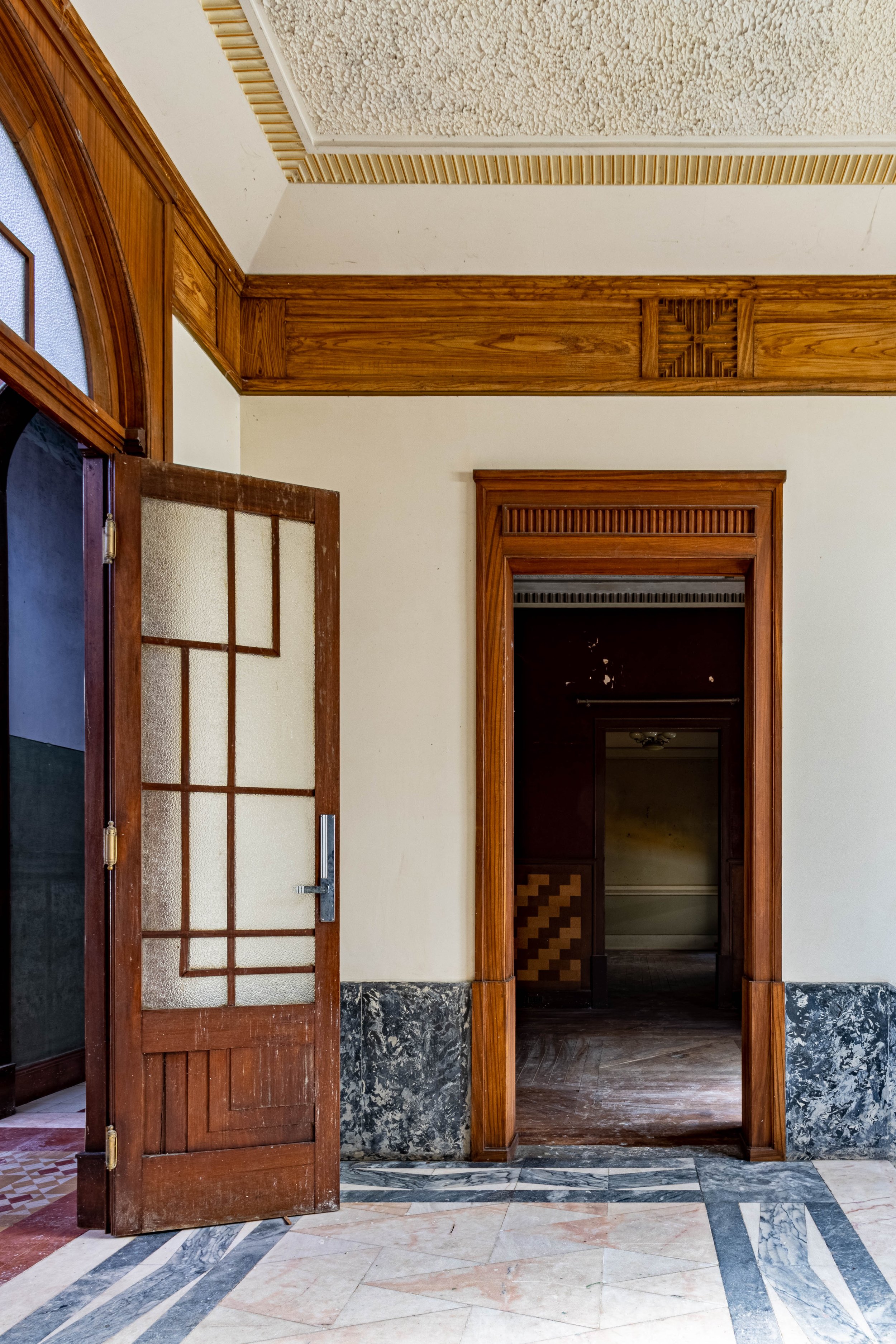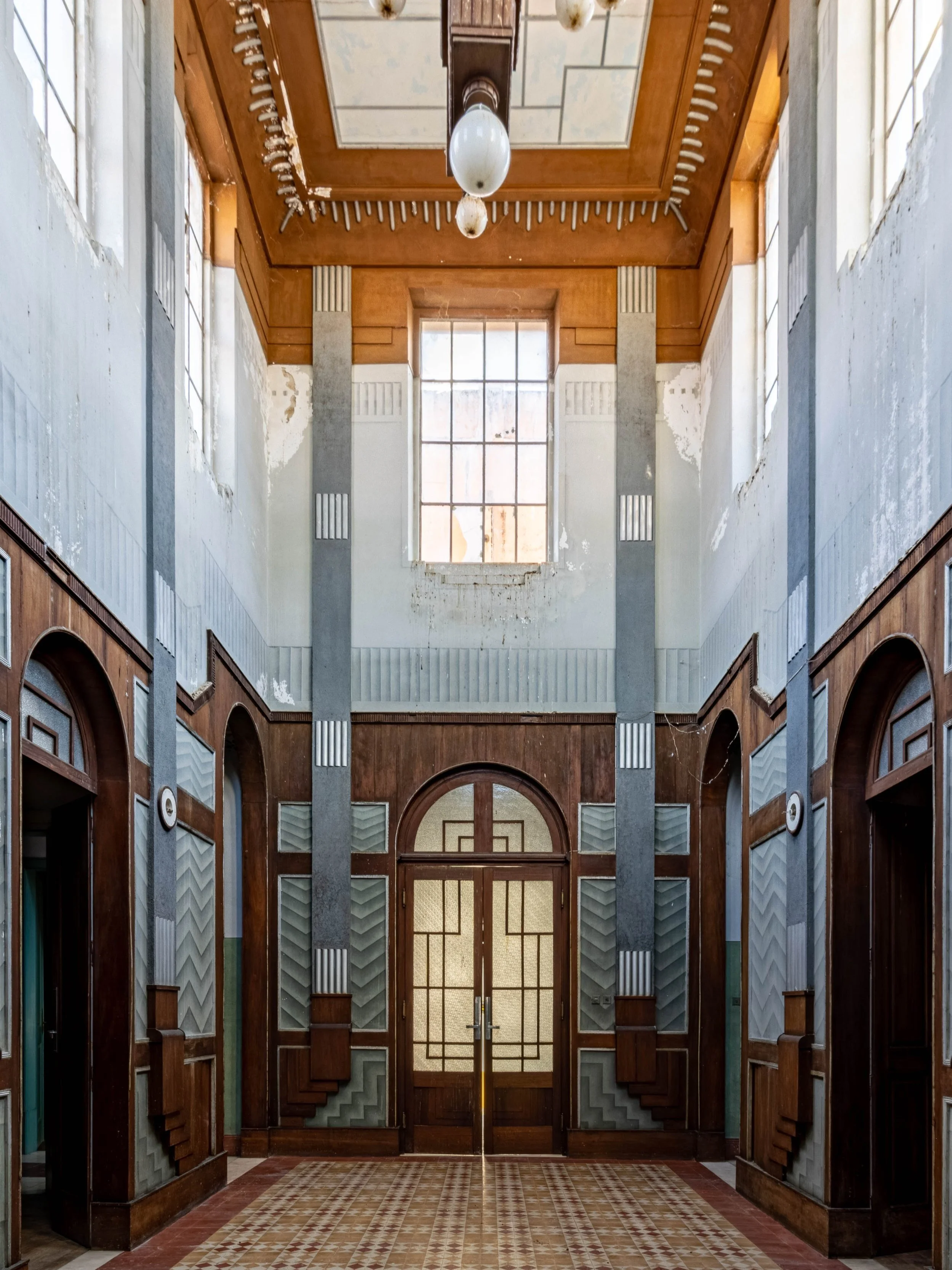The Great Eleven
OPEN HOUSE
One marvellous thing I’ve learnt since moving to Portugal is that most of the country’s towns and cities are home to examples of Art Deco and modernist architecture - a style that emerged here specifically in the 1930s having bloomed in Paris a decade earlier. Inspired by the movement abroad, Portugal’s creatives began adopting the style which often came to life in state buildings and mansions owned by wealthy families - the Casa de Serralves mansion in Porto being a prime example.
In smaller outposts across the country, noble families too adopted the style as a display of status, worldliness and taste. In Reguengos de Monsaraz in particular, a piece of modernist heritage has just gone on the market, opening its doors after almost 100 years to the highest bidder.
Portugal’s rural Alentejo region and a local agricultural tycoon has returned from his travels in France where he made his fortune. Wishing to inject a slither of Parisian pizzaz into his home he opts to transform his noble house in the village into an ode to modernism, influenced by the bold geometric forms, fine craftsmanship and rich materials.
Casa Serralves considered the most notable example of an Art Deco building in Portugal.
house was commissioned by pioneering architect to create the property retains its original features.
There is oak parquet flooring, a curved teak banister with curly wrought iron balustrades, leaded glass as well as arched doorways, fireplaces, light fittings, bathroom tiles and mirrors.
plenty of character
The striking hall has unusual multicoloured plaster and three integrated panel frames. liken to an Art Deco museum. The place is graded for its “high heritage” significance.
Art Deco was influenced by the bold geometric forms of Cubism combined with modern styles, fine craftsmanship and rich materials. The interior design followed the same principles of symmetry and geometric forms which set it apart from Art Nouveau, and bright colours, fine craftsmanship rare and expensive materials which set it apart from the strict functionality of the Modernist style.the lobby was decorated with art deco symbols and images expressing modernity
armchairs by Eileen Gray
In Portugal, Art Deco was also projected with excellent vigor. In fact, a substantial number of Portuguese artists of the 1st and 2nd Modernisms were highly committed practitioners of this taste which, as in other countries, renewed all the most diverse aspects of daily life
graphics and advertising, set design, cinema, the decorative arts and, finally, to daily life itself and its modern aspirations of cosmopolitanism and happiness.
generally had a neo-classic or Pombaline theme, but with a strong influence of modernist touches.
This is Open House, a series of interviews with those who we ask to talk about taste to cultivate a creative collective of people in Portugal.



Filipe, what is it that draws you to interior design specifically?
I have always had a special interest in interior design & architecture & recently started working with interiors as a creative consultant & project manager. It’s been very gratifying & liberating to finally be able to explore this area that I have always wanted to dive in. To be honest, this process has started a while back as a sort of hobby as I was always called by my friends & family to help out with furniture choices, layout & construction decisions & of course long DIY sessions. I consider myself a professional diy-er!



Let’s talk design…
My personal design signifier is...
I’m a believer in provocative concepts and expressive narratives honouring history, location and architecture through the use of pure and tactile materials/objects, translating into a clean and timeless design.
Something that attracts me to an interior or space is…
I like places that exude history and authenticity, spaces that haven’t changed their essence and make you feel like you travel in time.



The last place I went with design in mind was…
The spot for a new project I'm currently working on for a restaurant in Alta in Coimbra.
If I could recommend one design-led spot to seek for other Aesthetes visiting Portugal it would be...
Insofar, the contemporary art gallery in Marvila in Lisbon. One night, my wife and I walked past it and the gallery owner, Hugo Carvalho, was nice enough to open the doors and give us a guided tour. Everytime we visit the gallery we learn and discover many interesting works of art.



How about travelling…
If I could travel to any time in Portugal, it would be...
The late 1970’s. I would love to feel the celebratory vibes of a country that just gained their independence from a dictatorship. There was a high level of social respect and care in Portugal back then. The style and music were just great.
When I travel, my design eye is always looking out for…
Objects with history, could be a pot or a beautiful stone.
A treasured object that I found while travelling is…
A real size terracotta hand that it’s clearly a fragment of a bigger sculpture, found in a flea market in the interior of Portugal.


Making a house a home…
If money was no object, my dream home to design in Portugal would be.....
There’s an old house in Bussaco that I drive by since I was a kid and I dream of renovating. I would fantasise about living there and enjoying its big, front terrace and its tall arcs every time we would pass it to fetch fresh water from Luso.
The one artist whose work I would fill the house with would be...
Lourenço Providência, designer and illustrator from Porto, currently living in Copenhagen.



The best thing about coming home after travelling is...
Getting back to cook dinner with my wife and Douro our cat, and sipping on a glass of good wine while we ponder about where to place our new souvenirs.
My favourite room in my house is...
The living room. Maybe because it’s the place where I manage to spend less time in but also because it’s where most memories take place. I like to change the decoration on a regular basis (little tip to keep everything “new”).




